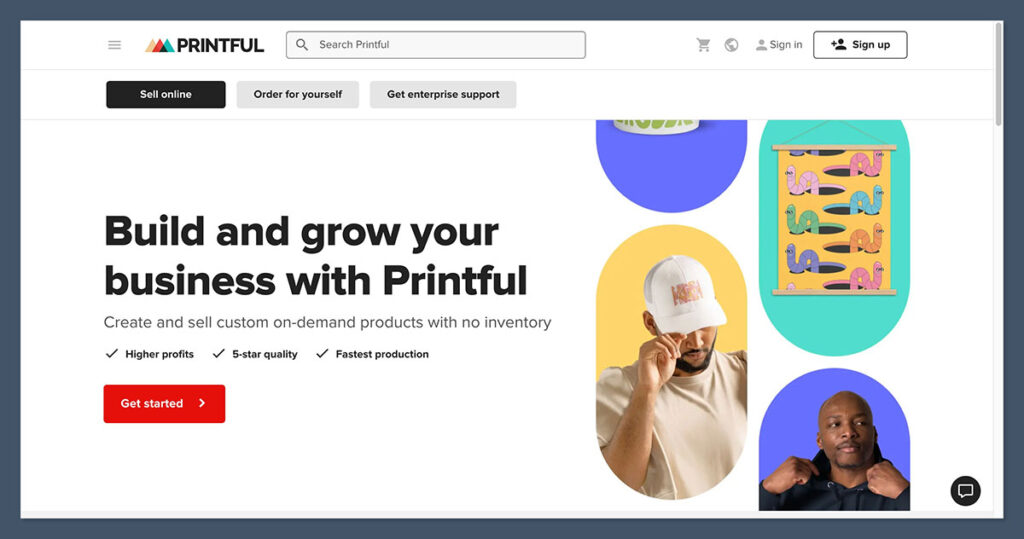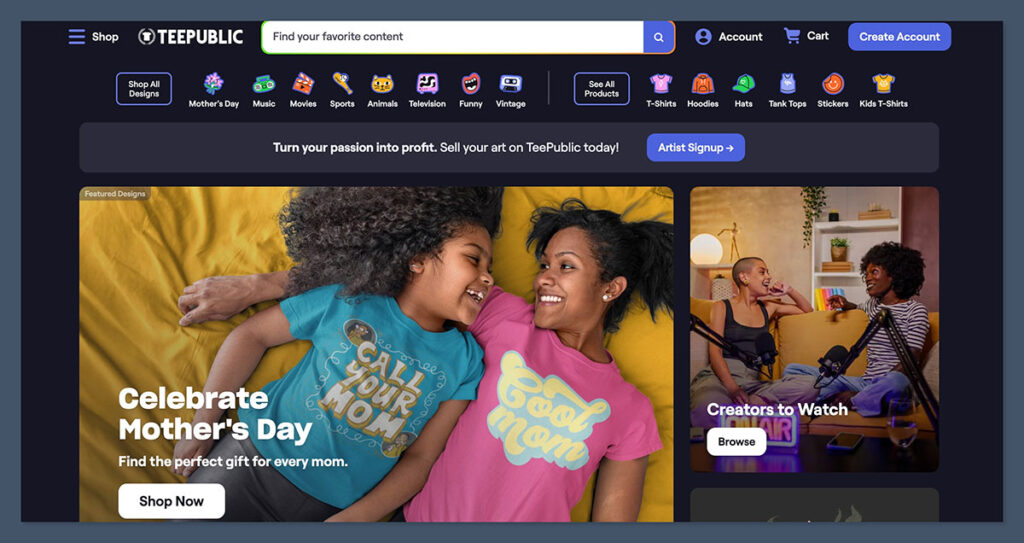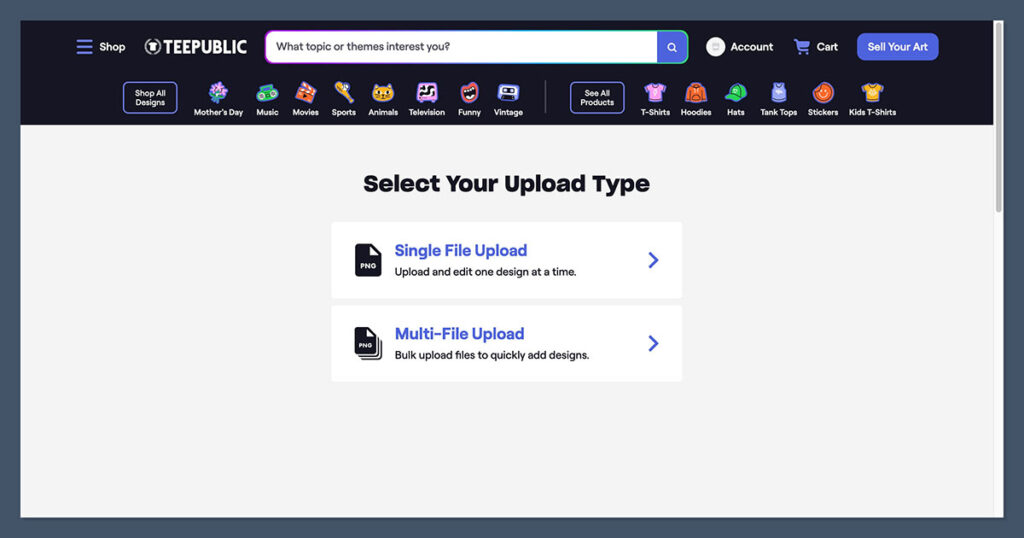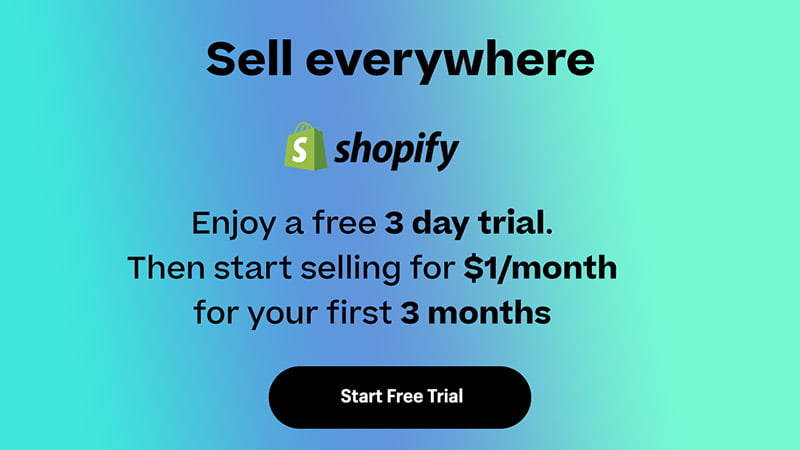Disclosure: We may earn a commission or fee from some of the links in our content. However, this does not affect our recommendations. Learn more.
Quick answer: If you want to build your own brand and control your margins, go with Printful.
If you want to upload a few designs and make passive sales, Teepublic is easier – but don’t expect to get rich.
I’ve been in print on demand (POD) for over a decade. I’ve tested everything – from obscure white-label suppliers to every “passive income” marketplace you’ve heard of.
This is my real take on Printful vs Teepublic. No fluff. Just the good, bad, and what will actually make you money.
Printful vs Teepublic: Side-by-Side Snapshot
| Feature | Printful | Teepublic |
|---|---|---|
| Platform Type | POD fulfiller | POD marketplace |
| Control Over Store | Full | None |
| Pricing Control | Yes | No |
| Passive Income Potential | Low | Medium |
| Brand Customisation | Full branding options | None |
| Setup Time | Moderate | Very fast |
| Customer Support | You handle it | Teepublic handles it |
| Product Range | 300+ | Mostly shirts & accessories |
| Profit Margins | Higher (with effort) | Fixed, lower |
| Best For | Brand builders | Side hustlers, artists |
Who Should Use Printful or Teepublic?
If you’re building a real business, go with Printful.
If you’re just testing the waters or want to upload art without promoting anything, Teepublic is fine.
This comes down to how much control you want, and how much effort you’re willing to put in.
Some people just want a quick win and don’t want to touch marketing.
Others are thinking long-term: building a brand, capturing emails, owning the customer. Those are two very different paths.
Here’s who each platform is best for:
Printful is best for:

- Shopify or Etsy sellers who want to own their store and customer list
- People building a brand with custom packaging, product lines, and growth plans
- Entrepreneurs looking for scale – more SKUs, better margins, and flexibility
- Sellers who want control over pricing, listings, fulfilment, and analytics
- Anyone with marketing skills or a budget for ads
Teepublic is best for:

- Artists who don’t want to do marketing and just want to upload designs
- Side hustlers or hobbyists who want to earn a little extra without much effort
- People who like set-it-and-forget-it workflows
- Designers testing concepts before launching on their own store
- Anyone intimidated by Shopify or Etsy setups
Let’s break it down even faster:
| You should choose… | If you want to… |
|---|---|
| Printful | Build a long-term ecommerce business, control your pricing, sell on your own terms |
| Teepublic | List designs quickly, let the platform handle everything, earn passively with minimal effort |
Pros & Cons Breakdown
| Platform | Pros | Cons |
|---|---|---|
| Printful | High margins Full control Branding options Integrates with everything | Requires marketing More setup You handle support |
| Teepublic | Easy setup Passive traffic Hands-off fulfilment | Low margins No branding No control |
Setup & Customisation
When it comes to getting started, these two platforms are very different in how much control and effort they require.
Printful integrates with platforms like Shopify, Etsy, Amazon, WooCommerce, and more.
That means you’re not just selling through Printful — you’re using it to power your own store.
You choose the platform, set the prices, write your own product descriptions, upload mockups, and own every part of the customer journey.
Yes, it’s more work.
You’ll need to set up a storefront, connect it with Printful, and go through product creation one by one. But once it’s running, it’s your system — not someone else’s marketplace.
Teepublic, on the other hand, is about as plug-and-play as it gets.
You create an account, upload a design, write a title and tags, and that’s it. No need to worry about mockups, pricing, branding, or fulfilment.
Teepublic takes care of the entire backend. But you also give up control.
There’s no way to tweak your store layout, create bundles, upsell, or use branded elements.
You’re just one of thousands of designers on their platform.
Printful Setup:
- Choose your ecommerce platform (Shopify, Etsy, etc.)
- Connect your store to Printful
- Create product mockups and write custom descriptions
- Set pricing and fulfilment preferences
- Own the checkout and customer experience
Teepublic Setup:

- Create an account
- Upload your design
- Add a title, tags, and select product types
- Publish — that’s it
| Feature | Printful | Teepublic |
|---|---|---|
| Platform Setup | Requires integration with a store | Native marketplace account |
| Time to Launch | 1–2 hours minimum | Under 10 minutes |
| Control Over Layout | Full (via your own store) | None |
| Design Mockups | Customisable | Auto-generated |
| Custom Branding | Yes | No |
Verdict:
- Use Printful if you want to build an actual store with full control and flexibility.
- Use Teepublic if you want to upload and forget, and don’t care about owning the customer journey.
Setting up on Printful takes more effort, but it puts you in the driver’s seat. Teepublic is like getting dropped off at the party — you’re there, but you didn’t pick the playlist.
Pricing & Profits
This is where it gets real.
If you’re planning to make serious money, this section matters more than anything else.
Margins, pricing control, and how much you actually take home per sale will determine if you’re running a business or just collecting pocket change.
Printful gives you full control over your pricing.
You pay a base cost to Printful (let’s say $13 for a premium t-shirt), then sell it at whatever price you want.
If you charge $27.99, your profit is $14.99, minus any marketing or transaction fees.
Of course, there’s more to it. You’ll likely spend money on:
- Paid ads
- Email tools
- Shopify or Etsy fees
- Time spent on fulfilment and customer service
But the trade-off? You can scale.
You’re not locked into a flat rate or fighting platform discounts.
Teepublic, on the other hand, uses fixed pricing.
You don’t get to choose what your product sells for. Teepublic decides that. You’ll earn about $4 per shirt at regular price, and $2 per shirt during sales — which happen a lot.
There’s zero way to increase your profit. You can’t upsell, adjust bundles, or experiment with pricing strategies.
It’s all set by them.
Here’s a real-world example:
| Platform | T-Shirt Base Cost | Retail Price | Your Earnings |
|---|---|---|---|
| Printful | $13 | $27.99 (your choice) | ~$14.99 (before fees) |
| Teepublic (Full Price) | N/A | $20 (fixed) | $4 |
| Teepublic (Sale Price) | N/A | $14 (fixed) | $2 |
Pros of Printful’s pricing model:
- You control the markup
- High-ticket product options = higher margins
- Custom bundles, discount codes, upsells
Pros of Teepublic’s model:
- No pricing decisions to make
- Payments are automated
- No concern over profit calculations
The flip side:
- Printful: You need to hustle to drive sales and manage fulfilment
- Teepublic: You’ll never scale past a certain income level
Verdict:
- Printful = higher margins, more work
- Teepublic = low effort, low income
If you’re fine earning a couple bucks per sale and want to stay hands-off, Teepublic’s system makes sense.
But if you want full control and bigger payouts, Printful gives you room to grow — it just takes more skin in the game.
Product Range & Quality
Product variety matters more than people think. The more options you have, the more you can test — and more importantly, upsell.
Printful gives you access to 300+ products, and I’ve personally tested a lot of them over the years. You’re not just limited to shirts.

There’s:
- T-shirts and hoodies (tons of styles and fits)
- Embroidered polos, caps, beanies
- Canvas prints, posters, framed art
- Drinkware: mugs, tumblers, water bottles
- Phone cases, backpacks, laptop sleeves
- Swimwear, leggings, baby clothes, pet products
They’re constantly adding new products too. Whether you’re building a fitness brand, a streetwear label, or a home décor line, there’s something for you.
And when it comes to quality, Printful’s printing, stitching, and materials hold up.
They’re not luxury-level, but I’ve had zero major complaints over hundreds of units.
DTG (direct-to-garment) prints are vibrant and long-lasting. Their embroidery’s better than average in the POD space.
Teepublic, on the other hand, is much more limited. Their core focus is apparel and small accessories. Here’s what you can expect:
- T-shirts and hoodies (limited styles)
- Kids’ shirts and baby onesies
- Stickers, magnets, phone cases
- Mugs, tote bags, notebooks
That’s about it. No embroidery, no canvas, no custom sizing or premium packaging.
The variety isn’t bad for casual artists or designers, but it’s nowhere near what Printful offers.
As for quality, it’s fine — nothing fancy. T-shirts feel like standard Gildan-style blanks.
Print quality is decent but can fade faster than expected, especially on darker shirts. It’s not something I’d want tied to a premium brand.
Comparison at a glance:
| Feature | Printful | Teepublic |
|---|---|---|
| Product Range | 300+ items | Apparel + small accessories |
| Apparel Options | Wide variety of styles & brands | Basic t-shirts, hoodies |
| Print Types | DTG, sublimation, embroidery | DTG only |
| Niche Product Options | Yes (pet gear, backpacks, swimwear) | No |
| Quality Control | Strong (with options for premium blanks) | Decent, but lower-end |
Pros of Printful:
- Huge variety lets you test more niches
- Offers premium brands like Bella+Canvas and Champion
- Custom embroidery + inside labels if you want to go premium
Pros of Teepublic:
- Simple catalog makes setup easier
- No confusion over which product types to use
Verdict:
- Printful wins on product range and flexibility
- Teepublic is fine for shirts, but that’s it
If you want to sell more than just t-shirts — or you’re even thinking about building a real brand — Printful gives you room to grow.
Teepublic keeps it basic, which is great for artists, but limiting for entrepreneurs.
Branding Options
This is where Printful absolutely destroys Teepublic — no contest.
Branding is everything when you’re trying to build a real business.
You want your customer to remember your name, not just the product. And Printful gives you all the tools to do that.
With Printful, you can:
- Add your logo and brand name to every packing slip
- Use custom packing inserts (like discount cards or thank-you notes)
- Offer inside neck labels and embroidered logos for a pro look (extra fee)
- Control your store’s look and feel through Shopify, Etsy, or WooCommerce
- Sell under your own domain name, not someone else’s
That means when a customer buys from you, they’re buying from your brand. Not “a seller on Printful.”
You own the experience from start to finish — packaging, website, and repeat communication.
Teepublic? It’s the opposite.
You’re just another designer listed on their marketplace.
You don’t get a domain. You don’t get packaging control. You don’t even get to include your logo.
Everything is Teepublic-branded — from the confirmation emails to the label on the package.
So even if someone loves your design, they’re more likely to remember Teepublic, not you.
And that kills customer retention.
What You Get with Each Platform:
| Feature | Printful | Teepublic |
|---|---|---|
| Branded Packing Slips | ✅ Yes | ❌ No |
| Custom Inserts | ✅ Yes | ❌ No |
| Inside Labels | ✅ (for a fee) | ❌ No |
| Embroidery Options | ✅ Yes | ❌ No |
| Your Own Domain | ✅ Yes | ❌ No |
| Platform Branding | ❌ None | ✅ Fully Teepublic-branded |
| Email List Access | ✅ You own it | ❌ Teepublic owns the customer |
Pros of Printful:
- Total control over branding = better customer retention
- Great for building a premium or niche brand
- Looks more professional (especially if you’re doing paid ads or influencer promos)
Pros of Teepublic:
- You don’t need to worry about branding
- Fast and simple setup for casual sellers
Verdict:
- Printful is for building a brand
- Teepublic is for selling under someone else’s flag
If you want repeat buyers, higher perceived value, and to eventually charge more for the same product — branding matters.
Teepublic doesn’t let you build that. With Printful, you’re not just selling t-shirts — you’re building something with your name on it.
Fulfilment, Shipping & Support
This is where a lot of new sellers underestimate the work involved.
Fulfilment and customer service don’t just affect how your store runs — they directly impact your reviews, repeat customers, and headaches.
Printful’s Fulfilment Setup:
Printful has a global network of fulfilment centres, including:
- The US (East and West Coast)
- Canada
- Mexico
- EU (Spain, Latvia)
- UK and Australia (partner facilities)
That means faster delivery no matter where your customer lives.
In my experience, US orders typically arrive in 3–5 days, and EU orders in 4–7 days, depending on the product and time of year.
You also get:
- Real-time tracking
- Order notifications
- Automatic sync with your store’s checkout
But here’s the trade-off: you handle customer support.
That means refunds, replacements, and complaints go through you — even if the problem was Printful’s fault.
You have control, but it comes with responsibility.
Teepublic’s Fulfilment Setup:
Teepublic is 100% hands-off. They handle:
- Printing and fulfilment
- Customer support
- Returns and refunds
- Shipping updates
You never touch a single order. You don’t even see who bought your products unless you dig into their dashboard.
That’s great if you want to stay lean and hands-off. But it also means:
- You don’t control the experience
- You can’t offer better packaging or faster service
- You can’t directly follow up with customers
Also, unless the customer pays for expedited shipping, delivery times are slower than Printful.
Standard delivery in the US can take up to 7–10 business days, and longer internationally.
Fulfilment & Support Comparison:
| Feature | Printful | Teepublic |
|---|---|---|
| Global Fulfilment | ✅ Yes | ❌ Mostly US-based |
| Avg. Shipping Time (US) | 3–5 days | 7–10 days |
| Customer Support | You handle it | Teepublic handles it |
| Returns & Refunds | You manage it | Done by Teepublic |
| Branded Packaging | ✅ Yes | ❌ No |
| Tracking Updates | ✅ Yes | ✅ Yes (basic) |
| Fulfilment Automation | ✅ Seamless integrations | ✅ Fully automated |
Pros of Printful:
- Faster global fulfilment
- More control over customer experience
- Can offer premium packaging and shipping options
Pros of Teepublic:
- Zero customer support stress
- You don’t have to manage any part of the order process
- Fully automated backend
Verdict:
- Printful = better logistics and control
- Teepublic = less hassle but slower shipping
If you want to offer a premium experience and handle issues fast, go with Printful.
If you’d rather stay out of the loop and avoid dealing with customers entirely, Teepublic keeps things simple — but don’t expect lightning-fast delivery.
Marketing & Traffic
Here’s the truth most people won’t tell you:
Printful gets you zero traffic.
No one’s going to magically land on your product. You have to bring the buyer.
That means:
- Learning SEO
- Running paid ads (Google, Meta, TikTok)
- Building an audience on social media
- Starting an email list
- Creating content (blogs, videos, reviews)
If you’re using Printful with a platform like Shopify or Etsy, you’re running the entire front end.
All the traffic, all the eyeballs — it’s on you. No one is promoting your store but you. That sounds hard because it is.
But the upside is: you control the entire funnel.
Teepublic works differently. It’s a marketplace, like Redbubble or Amazon Merch.
People are already browsing the site for designs. If you upload solid artwork and use the right tags, you can get organic sales without lifting a finger.
But there’s a catch.
You’re one of thousands of sellers. You’re not ranking based on your brand — just keywords, tags, and luck.
Even if a shirt takes off, the customer isn’t coming back to you — they’re coming back to Teepublic.
You don’t own their email. You don’t control their next purchase.
It’s like renting a booth in a busy mall vs. owning your own shop on a quiet street.
One gives you foot traffic. The other gives you full control.
Marketing Summary:
| Platform | Who Drives Traffic? | SEO/Ads Needed? | Brand Loyalty? | Customer Ownership |
|---|---|---|---|---|
| Printful | You | ✅ Yes – essential | ✅ Yes, long term | ✅ Yes |
| Teepublic | Teepublic | ❌ No (but tags matter) | ❌ No | ❌ No |
Pros of Printful:
- You control every touchpoint with the buyer
- Repeat business is possible through remarketing
- You can scale through paid ads, email, and SEO
Pros of Teepublic:
- Built-in traffic — people already shop there
- You can earn passively from organic marketplace sales
- No need to manage traffic or promotions
The flip side:
- With Printful, you have to do the marketing — or nothing sells
- With Teepublic, they bring the visitors, but you don’t own the relationship
Verdict:
- Printful needs marketing. It’s hard, but you control it.
- Teepublic brings eyeballs, but they’re not loyal customers.
If you want control, scalability, and long-term profit, learn traffic and use Printful.
If you’re not ready to promote — or just want to test designs with minimal effort — Teepublic can get you some easy wins, but don’t expect to build a loyal audience there.
Passive Income vs Long-Term Business
Let’s get clear on what kind of business you’re really building.
Teepublic is more passive.
You upload your designs, add some tags, and that’s it. You don’t manage a store. You don’t talk to customers. You don’t deal with fulfilment or marketing.
Once it’s live, it runs on its own. If a design takes off, you’ll get paid while doing nothing.
Sounds great, right? But here’s the limitation — the income ceiling is low.
Even if you upload hundreds of designs, you’re still playing in someone else’s playground.
They control pricing, branding, and visibility.
Most people on Teepublic earn a few dollars per sale, and even top sellers often max out in the low four-figure monthly range — unless something goes viral.
On the flip side, Printful is an active business.
It takes work — setting up your store, building traffic, handling customer service, and testing pricing. But the upside is huge.
You can:
- Build a brand
- Capture emails and retarget
- Set your own margins
- Scale with paid traffic
- Eventually sell the business if it grows large enough
It’s not passive. But it’s a business with real growth potential.
I’ve seen sellers hit 6 figures in revenue within a year — not because they got lucky, but because they treated it like a business, not a lottery ticket.
Passive vs Active Summary:
| Platform | Business Type | Passive Income Potential | Scalable Growth | Brand Value |
|---|---|---|---|---|
| Teepublic | Passive Side Hustle | Yes, but limited | Not scalable | None |
| Printful | Active Ecom Business | No | Yes | Yes |
Teepublic: What You Get
- Passive trickle of income (sometimes daily sales)
- No overhead, no customer handling
- Great for artists, hobbyists, and side hustlers
Printful: What You Get
- Full control over pricing, marketing, and scale
- A real asset you can grow, optimise, and sell
- Higher earning potential, but requires consistent effort
The flip side:
- Teepublic pays out while you sleep, but you can’t grow beyond their rules
- Printful requires you to show up, but you can build a real income stream
Verdict:
- Teepublic = passive trickle
- Printful = scalable business
If your goal is to earn a bit of passive income with minimal effort, Teepublic does the job.
But if you’re in this to build something that can grow, evolve, and generate real revenue — Printful is the smarter path.
Final Thoughts – What I Actually Recommend
If I had to start from scratch?
Here’s exactly what I’d do.
I’d begin with Teepublic. I’d upload 10–20 designs, keep the titles clean, use solid tags, and see what sells.
It’s low-effort, zero cost, and a great way to validate designs without building a full store or running ads.
Why? Because you’ll quickly learn:
- Which styles and niches actually get attention
- What keywords are driving sales
- What your target customer responds to
Once I had a few consistent sellers — or even just a clear pattern of what works — I’d take the top performers and rebuild those into a real brand using Printful.
I’d pick either Shopify or Etsy (depending on audience), integrate it with Printful, and start running real traffic:
- Paid ads or SEO for long-term growth
- Build an email list from day one
- Add branded packaging and upsells
That way, I’m not guessing. I’m using Teepublic as a free test lab — then scaling what’s proven with a brand I control.

